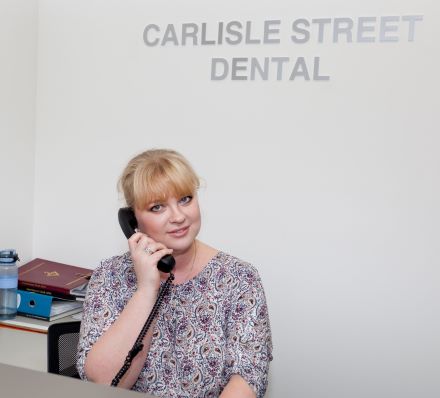SERVICES

SERVICES 1
Dental Examination
A dental examination is the assessment of the teeth, gingiva (gums), the bones, muscles and joints of the face, and mucous membranes within the mouth and throat.
The purpose of a dental examination is to identify problems with the teeth, including decayed, damaged, or missing teeth, positioning of the teeth, and ensuring that there are no problems with previous dental work such as crowns or fillings.
Mucous membranes in the mouth and throat are examined for signs of oral cancer.
Gums are evaluated for signs of periodontal disease including measuring depth of periodontal pockets and bleeding.
Dental care begins with this assessment, and is followed by diagnosis, planning, implementation, and evaluation.
Most adults and children should get a dental exam every six months. If you have swollen, bleeding gums (known as gingivitis) or other gum disease, or some other underlying medical conditions we may want to see you more often. Some adults with gum disease may require to see a dentist four times a year. More frequent exams may help prevent a serious gum disease known as periodontitis. Periodontitis can lead to infection and tooth loss.
Babies should have their first dental appointment ideally within 12 months of getting their first tooth. After that, they should get an exam every six months. Also, your child may need to have more frequent visits if we find a problem with tooth development or other another oral health issue.
Dental X-Rays
Dental radiographs, are an essential part of any dental care treatment plan. They are diagnostic, but they can also be preventative, by helping a dentist diagnose potential oral care issues in a patient’s mouth before they become a major problem.
X-rays are divided into two main categories, intraoral and extraoral. Intraoral is an X-ray that is taken inside the mouth. An extraoral X-ray is taken outside of the mouth.
Intraoral X-rays are the most common type of radiograph taken in dentistry. They give a high level of detail of the tooth, bone and supporting tissues of the mouth. These X-rays allow dentists to find cavities, to look at the tooth roots, to check the bone level around the tooth, to see the status of developing teeth.
Dental Cleaning
The saliva, bacteria, and proteins in your mouth form a thin layer that covers your teeth. When you eat, tiny particles, acids, and sugars from the food stick to this film, creating a buildup on the teeth known as plaque. The bacteria that lives in this plaque can cause gum disease and tooth decay.
Dental cleaning is a preventative procedure performed by dentist to maintain oral health. The aims to remove the dental plaque and tartar that have accumulated on the teeth to protect them from cavities or dental caries as well as other tooth and gum problems.
First, we are using ultrasonic instruments that use vibrations to effectively loosen up large pieces of tartar. At the same time, it sprays water to wash away the small debris as they come loose. Once the larger pieces have been removed, Dr Hirsh change from ultrasonic instrument to hand scaler to remove any calculus that has been left. Finally, we are polishing teeth to remove stain and make teeth surfaces smoother.
Flouride Application
At the end of dental clean we may offer you a fluoride treatment.
Fluoride is a natural mineral that builds strong teeth and prevents cavities. It’s been an essential oral health treatment for decades. Fluoride supports healthy tooth enamel and fights the bacteria that harm teeth and gums.
Application of fluoride only takes couple of minutes. After the fluoride treatment you have to avoid rinsing, eating or drinking for 30 minutes so the fluoride can fully absorb.

SERVICES 2
Fissure Sealants
Our back teeth (molars and premolars) have fissures. Some teeth naturally have deeper grooves which will need to be sealed.
Sealants are a safe and painless way of protecting your teeth from tooth decay. A sealant is a protective plastic coating, which is applied to the biting surfaces of the back teeth. The sealant forms a hard shield that keeps food and bacteria from getting into the tiny grooves in the teeth and causing decay.
Tooth coloured fillings
Tooth coloured fillings, also called white fillings, are dental fillings that restore and mimic the natural appearance of tooth structure. In addition to restoring teeth that have fractured or decayed, tooth coloured fillings may also be used cosmetically to change the size, colour and shape of teeth. This quality is particularly useful in closing gaps between teeth; repairing chipped teeth and making teeth appear to be more straight or even.
Root canal treatment
Root canal treatment is a sequence of treatments for the pulp of a tooth which results in the elimination of infection and protection of the decontaminated tooth from future microbial invasion. Root canals and their associated pulp chamber are the physical hollows within a tooth that are naturally inhabited by nerve tissue, blood vessels and other cellular entities. Endodontic therapy involves the removal of these structures, the subsequent cleaning, shaping, and decontamination of the hollows with tiny files and irrigating solutions, and the filling of the decontaminated canals with an inert filling.
Crowns
A crown is a type of dental restoration which completely caps or encircles a tooth or dental implant. Crowns are often needed when a large cavity threatens the ongoing health of a tooth. They are typically bonded to the tooth using a dental cement. Crowns can be made from many materials, which are usually fabricated using indirect methods. Crowns are often used to improve the strength or appearance of teeth.

SERVICES 3
Implant supported crowns and dentures
Implants can be used to replace missing teeth. They are surgically placed by a specialist and then used to support crowns or dentures.
Bridges
A bridge, also known as a fixed partial denture, is a dental restoration used to replace a missing tooth by joining permanently to adjacent teeth or dental implants.
Veneers
A veneer is a thin layer of restorative material placed over a tooth surface, either to improve the aesthetics of a tooth, or to protect a damaged tooth surface.
Full and Partial Dentures
Dentures are prosthetic devices constructed to replace missing teeth, and which are supported by surrounding soft and hard tissues of the oral cavity. Conventional dentures are removable; however there are many different denture designs, some which rely on bonding or clasping on to teeth or dental implants

SERVICES 4
Splints
Splints are removable, custom fitted devices used to help manage bite problems and protect teeth and restorations from grinding.
Mouth guards
Custom made to protect teeth and jaws from sporting injury.
Tooth Whitening Service
Either performed in surgery in about an hour or take home kits provided.
Emergencies
Seen promptly.
Occlusal Splint
A splint is a custom-made appliance that you wear at night to protect your teeth from grinding. It can be made from different materials and can be designed to suit your personal needs.
Composite Resin Fillings
These are the most common type of fillings. They are tooth-colored and generally invisible. They are bonded to existing tooth structure and are highly successful for small and medium sized restorations.
Glass-Ionomer Cement Fillings
Glass-Ionomer cement is a type of fillings, most commonly used for fillings below the gum line.
Glass ionomers release fluoride, which can help protect the tooth from further decay.
Crowns
A dental crown is a tooth-shaped cap that is placed over a tooth — to cover the tooth to restore its shape and size, strength, and improve its appearance.
A dental crown for example may be needed to protect a weak tooth from breaking or to hold together parts of a cracked tooth, to cover and support a tooth with a large filling when there isn’t a lot of tooth left, to improve the aesthetics of a discoloured tooth or to hold a dental bridge in place.
